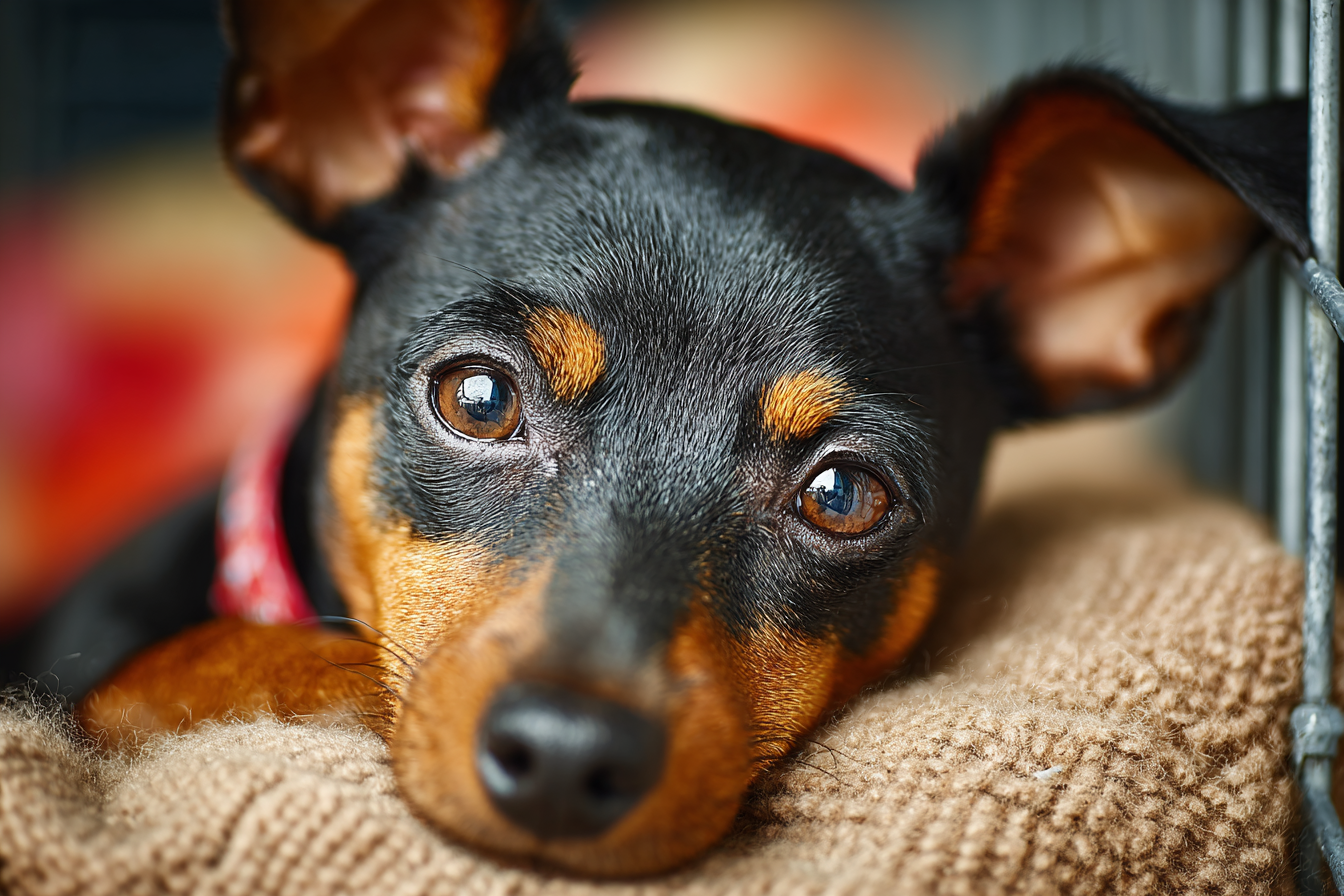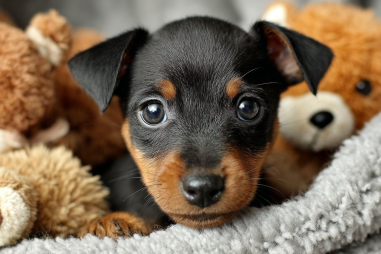Crate training is an invaluable tool for Miniature Pinscher owners who want to provide their lively and spirited dogs with a comfortable, secure space. Besides offering a protective haven, crate training can greatly assist in housebreaking, reduce destructive behaviors, and even ease separation anxiety. If you’re eager to teach your Miniature Pinscher how to love their crate, this guide walks you through the process step-by-step to ensure training is effective, stress-free, and downright enjoyable for both of you.
Benefits of Crate Training
Before diving into crate training techniques, it’s helpful to understand why crate training can be beneficial for your Miniature Pinscher.
- Creates a Safe Space: Miniature Pinschers are energetic and curious dogs who can easily get into trouble when unsupervised. A crate offers a den-like environment where your dog can retreat and feel secure.
- Assists with Housebreaking: Dogs naturally avoid soiling their sleeping area, so keeping your dog in a crate when you can’t supervise encourages them to hold their bladder and bowels until they are let out.
- Supports Behavior Training: Crate training can help reduce destructive chewing or excessive barking by limiting your pup’s access to the rest of the house.
- Eases Travel and Vet Visits: Getting your Miniature Pinscher accustomed to a crate makes car rides, vet visits, and boarding less stressful for your dog.
- Prevents Separation Anxiety: A crate can provide a consistent, comforting environment that reduces your pup’s anxiety when you’re away.
Choosing the Right Crate
Not all crates are created equal, and selecting the right one for your Miniature Pinscher is crucial for successful training.
Your chosen crate should be:
- Appropriately Sized: The crate should be big enough for your Miniature Pinscher to stand up, turn around, and lie down comfortably, but not so large that it feels like an open playground. A crate that’s too big can encourage your dog to use one corner as a bathroom.
- Durable and Safe: Look for crates made with sturdy material such as metal or high-quality plastic with proper ventilation. Miniature Pinschers are small but spirited, so the crate needs to withstand some pawing.
- Easy to Clean: Choose a design with removable trays or floors that make cleaning accidents fast and easy.
- Portable: If you plan to travel or move the crate often, a foldable or lightweight option will be helpful.
Many owners prefer wire crates with dividers so they can adjust the size as the puppy grows. Alternatively, soft-sided crates are lightweight and cozy but may not be suitable for dogs prone to chewing.
Introducing Your Dog to the Crate
Introducing your Miniature Pinscher to the crate is a crucial first step that requires patience and positive reinforcement.
- Choose the Right Location: Place the crate in a quiet but commonly used room where the family spends time. This helps your pup feel involved rather than isolated.
- Make it Inviting: Add a soft cushion or blanket to the base of the crate. Bring in familiar scents by using a worn t-shirt or your dog’s favorite toy.
- Encourage Voluntary Entry: Leave the door open and toss treats or favorite toys inside to entice your dog to explore at their own pace.
- Stay Close: Sit nearby initially so your puppy associates the crate with calm presence and safety.
- Use Calm Commands: Introduce simple commands like “crate” or “bed” whenever your dog enters, to build association.
- Short Sessions: Start with brief crate stays, gradually increasing the time as your pup becomes more comfortable.
Establishing Positive Associations
Building positive connections with the crate ensures your Miniature Pinscher views it as a welcoming space rather than a punishment.
- Feed Meals in the Crate: Using the crate as a dining area makes it a place your pup eagerly anticipates visiting.
- Praise and Treats: Reward your dog with treats and enthusiastic praise whenever they enter or stay calm in the crate.
- Toys and Chews: Leave special chew toys or puzzle feeders in the crate to encourage relaxed, happy time inside.
- Keep Sessions Calm: Avoid abruptly closing the crate door or forcing your dog inside. The goal is gentle, positive experiences.
- Consistency: Regularly use the crate throughout the day for rest or quiet moments to normalize crate time.
Troubleshooting Common Crate Training Issues
It’s normal to encounter some challenges when crate training your Miniature Pinscher. Here’s how to tackle common problems:
Reluctance to Enter
If your dog is hesitant to step inside, try using high-value treats or a favorite toy to motivate entry. Keep the atmosphere upbeat and avoid forcing; patience is key.
Whining and Barking
Whining often signals your dog wants out, but it’s important not to reward this behavior immediately. Instead, wait for a moment of silence before opening the door. Also, ensure your dog’s needs (bathroom, exercise) are met before crating.
Chewing or Scratching the Crate
Chewing metal or scratching can indicate anxiety or boredom. Make sure to tire out your dog with play or walks beforehand and provide engaging toys inside the crate.
Accidents Inside the Crate
Accidents can occur if the crate is too large or if your dog is crated for too long. Avoid extended confinement and ensure you take your pup out frequently for bathroom breaks.
Separation Anxiety
If your Miniature Pinscher struggles to be left alone, gradually increase crate time while nearby and slowly extend your absence. Consider consulting a professional if anxiety persists.
Transitioning Out of Crate Training
Once your Miniature Pinscher consistently uses their crate calmly and without accidents, you may wonder when and how to reduce crate time.
A gradual transition helps maintain the benefits of crate training without causing confusion or anxiety:
- Extend Freedom Gradually: Allow supervised off-crate time, increasing duration as your dog proves trustworthy.
- Maintain Routine: Continue using the crate for naps, overnight sleeping, or travel to reinforce it as a safe, familiar space.
- Monitor Behavior: Watch for signs of anxiety or misbehavior and return to more frequent crate use if necessary.
- Provide Alternatives: Set up a safe playpen or gated area for times when a crate isn’t used but supervision is limited.
Remember, even when your Miniature Pinscher no longer needs constant crate time, the crate remains a valuable tool for safety and comfort throughout their life.
Crate training your Miniature Pinscher is a journey that combines consistency, compassion, and positive reinforcement. By providing a cozy den, making the crate inviting, and addressing challenges calmly, you can help your furry companion embrace their crate as a happy retreat. With time and patience, your Miniature Pinscher will not only benefit from crate training but also become a well-adjusted member of your family.







